Gardeners, aspiring gardeners, flower boutique owners and patrons, those of you who enjoy the resplendent array of blooms that accompany Spring, a beautiful budding hello to you all. While Roses, Petunias and Sun Flowers are lovely, there is nothing quite as breathtaking as the uncultivated beauty you will encounter as you travel throughout the Blue Ridge Mountain area. If you’ve been biking or hiking on any one of the mountain’s trails or have driven through the area; you are aware of the spectacular sights. However, if you haven’t, here you will be given a small glimpse of what you are missing as we look at some of the wildflowers that have made the Blue Ridge Mountains their home.
Here are some of the most common wildflowers; the botanical names, habitats and periods of blooming in the Blue Ridge Mountains.
Bloodroot (Sanguinaria Canadensis), a perennial flowering plant and member of the poppy family, opens in full sun and closes at night. The petal flowers and leaves grow on separate stems: the leaves wrap themselves around the flower buds forcing them to grow a few inches taller to blossom. Bloodroot flower has 8 – 12 soft white petals and a golden-orange center; it typically grows 6 – 10 inches tall. The plant does best in partial shade, moist to wet Sandy, humus-rich soil. The Bloodroot is in full bloom between April and May.
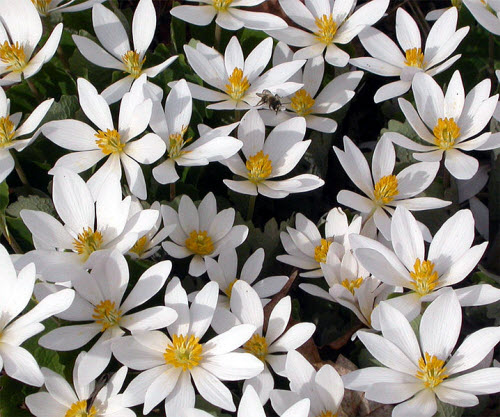
Dogwood (Cornus Florida) or flowering Dogwood is a low-branched tree that normally grows to a height of 35 – 40 feet. Its oval shaped leaves are about 5 inches long and 3 inches wide; its light pink or creamy white four petal flowers bloom in early spring. The Dogwood grows mostly in the shade of other trees: the plant likes moist soil, however, it will adapt to drier grounds.

Photos: Courtesy of Lone Cypress Photo Stream and Forestfarm
Indian Paintbrush (castilleja coccinea) is an annual herb/forb that sheds its leaves every year. The scarlet red area of the flower is edible: it provides the same health benefits as garlic, however, it must be consumed it small amounts. The herb prefers dry to moist soil and grows in mid to high elevations along roadsides and in forests. At full maturity (approx. 20 years), the Indian Paintbrush may grow to a height a little over 1 ½ feet. Its peak bloom is mid-spring and, continues through summer.
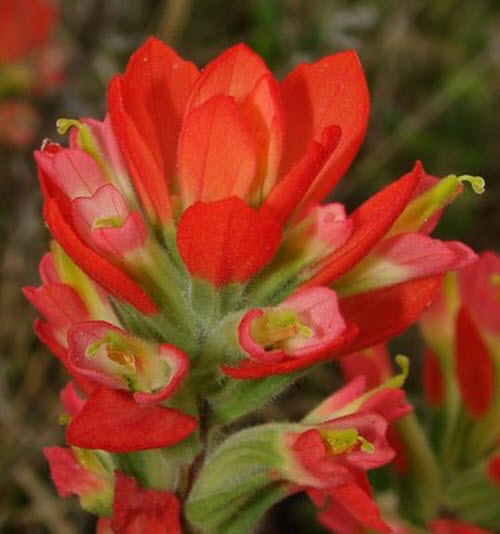
Photo by: George Zabawa
Mountain Laurel (Kalmia latifolia); a specie of the blueberry family, prefers dry or moist acidic soil. The flower strives best in partially shaded areas and can grow anywhere between 12 and 20 feet. It has light to dark green leaves and its bell-shaped flowers range from a snowy white to light pink in color and blooms in clusters. Mountain Laurel peak blooming period is late May – June. The flower can be found many places along the Blue Ridge Parkway.
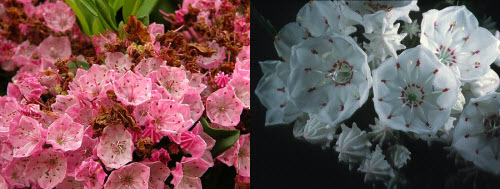
Photo: Courtesy of Wikimedia
Rhododendron (Rhododendron Macrophyllum), is a member of the woody plants in the heath family. This shrub has the capacity to reach a height of 9 meters, retains its leaves for 2 – 3 years and blooms gorgeous hues of pink and purple flowers 3 – 4 cm long during Spring and Summer. Rhododendron thrives in partial sunlight and humus-rich, moist soil. The plant grows best on roadside embankments and other disturbed areas.
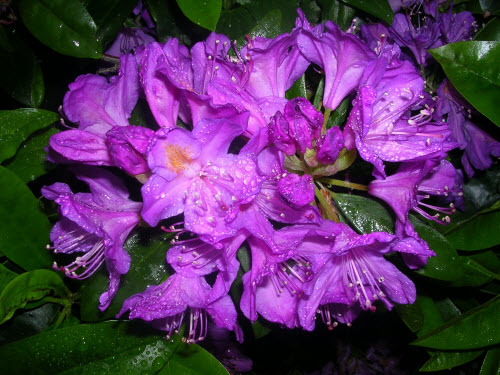
Photo: courtesy of Topic Media
Tulip Poplar (Liriodendron tulipifera), a specie of the magnolia family; may grow to a height of 120 feet with a trunk diameter between 2 and 5 feet. This tree prefers deep, well-drained and moderately moist soil. It is most common in the low woods and coves of the Blue Ridge. Tulip Poplar normally blooms a light green flower with orange base, in some cases it blooms white with an orange band on the petals, during the months of April and May.
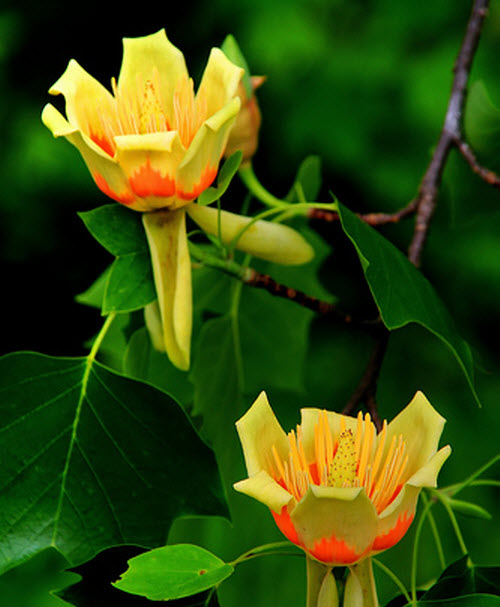
Photo: by D L Ennis
Trillium (Trillium grandiflorum) grows approximately 8 inches in height in slopes, coves and rich wood of the Blue Ridge Mountains. The Trillium’s large white or pink flower is usually bent downwards. The flower is prettiest between the months of April and May.
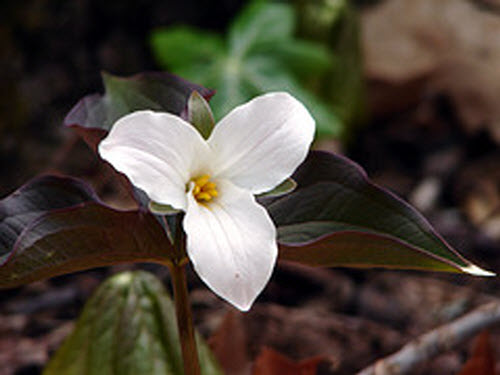
Photo by: D L Ennis
Skunk Cabbage (Symplocarpus Foetidus), is a perennial plant that survives best in wet woodlands, swamp or thickets which allows underground seepage. The plant’s peak bloom occurs during February and March: the leaves wither away by the end of summer. Skunk Cabbage can be found in many partially shaded areas along the Blue Ridge Parkway.
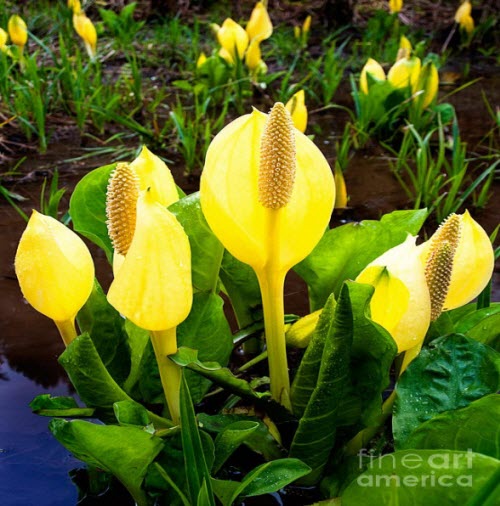
Honorable Mentions
Dandelion ((Taraxacum officinale)
Blooms Feb – Jun, common along roadsides

Photo by: Andrew Buckin
Goldenrod (Solidago)
Blooms Sept. common in fields and along roadsides
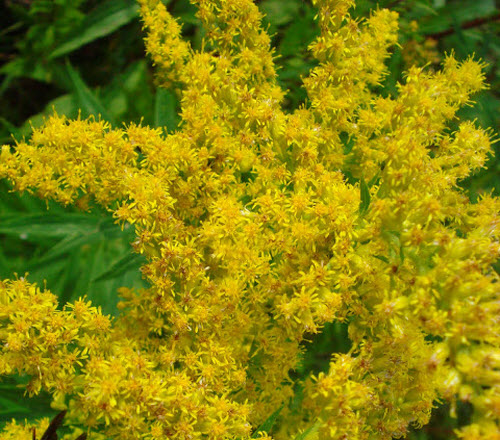
Nodding Lady Tresses (Spiranthes cernua)
Blooms Aug – Frost
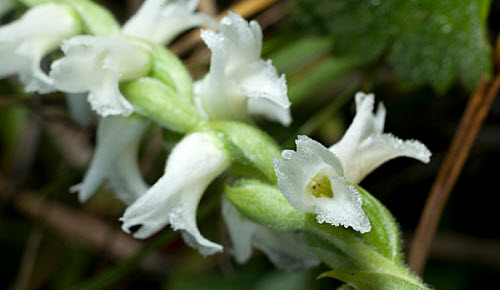
Visit http://www.virtualblueridge.com/parkway/general/bloom.asp for a comprehensive list of Blue Ridge Parkway wildflowers, blooming periods and locations.
For more wildflower photographs courtesy of D L Ennis visit;
http://blueridgegazette.blogspot.com/
